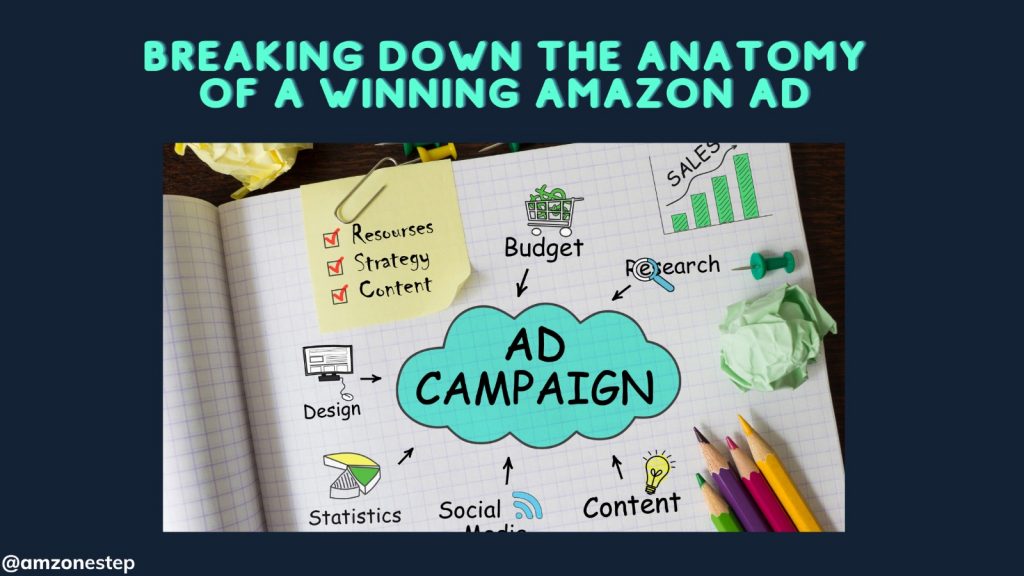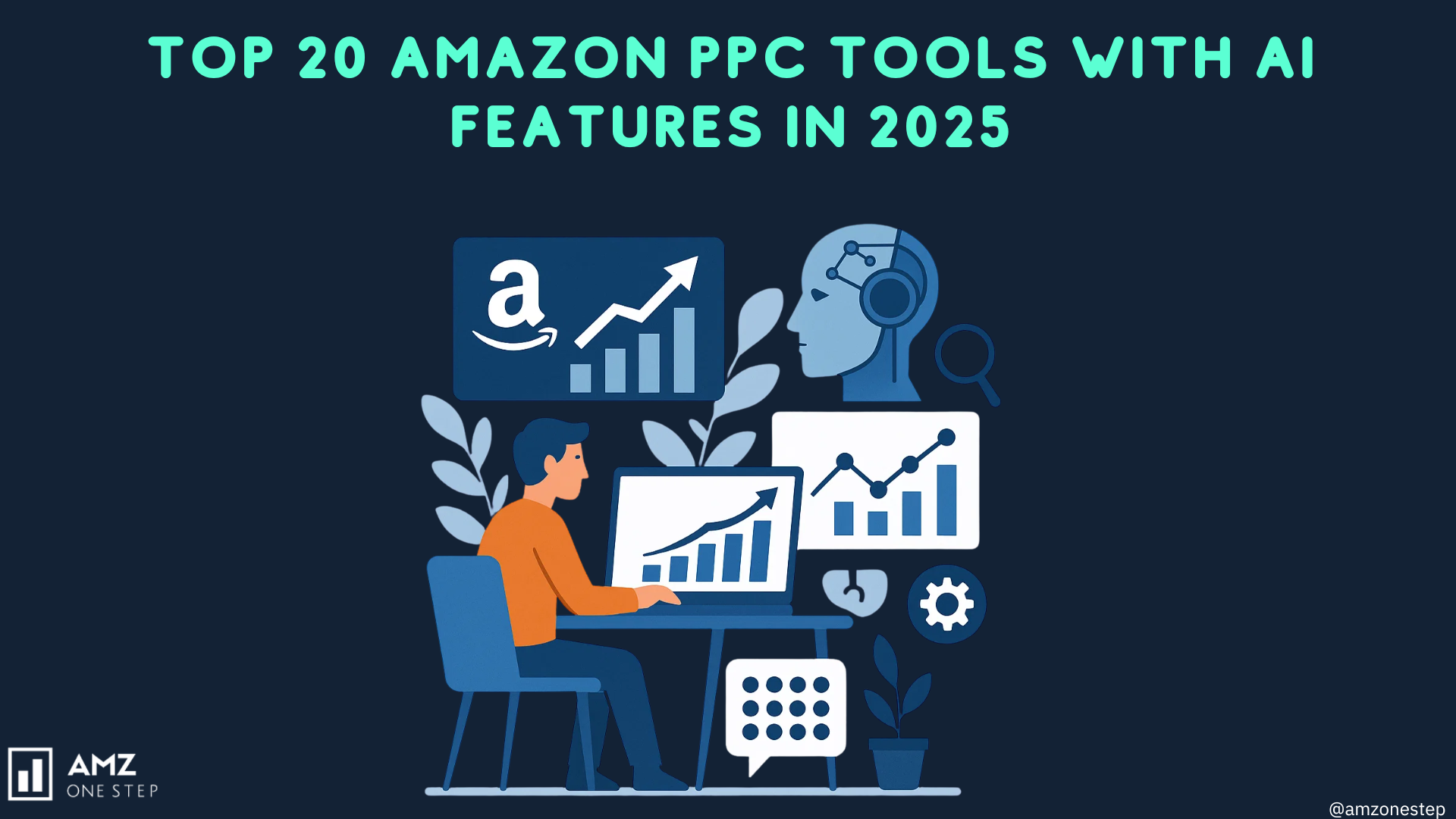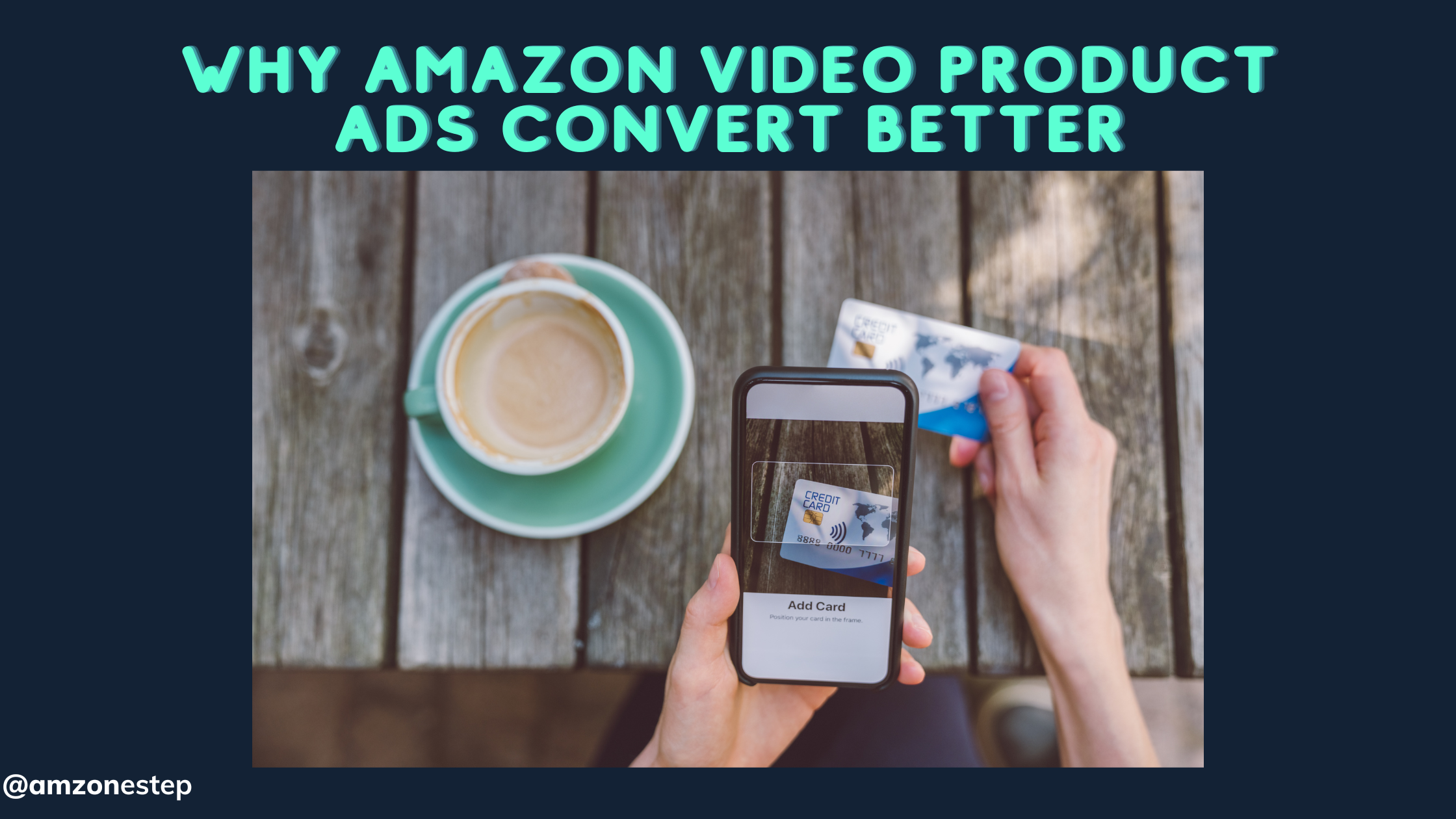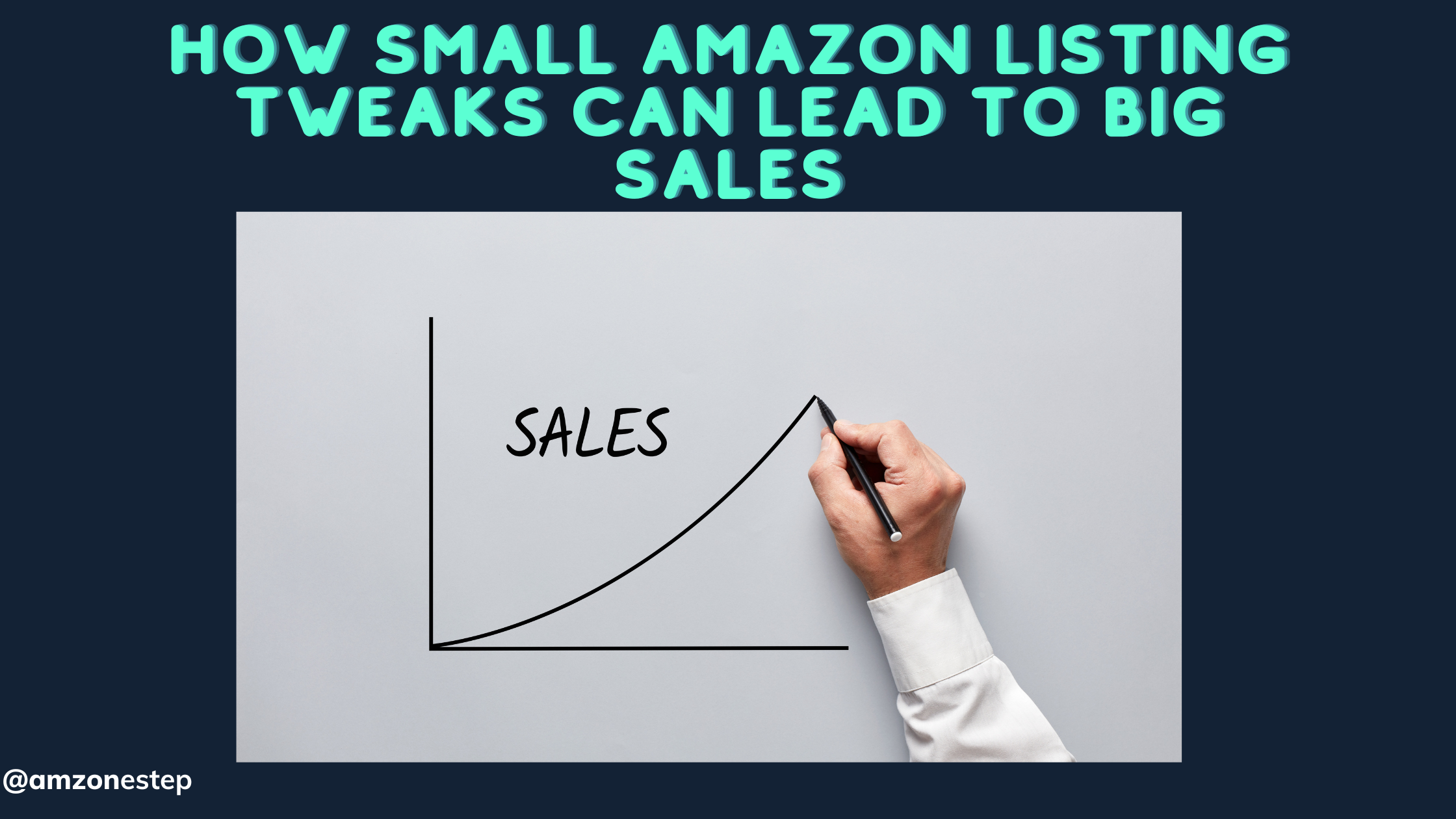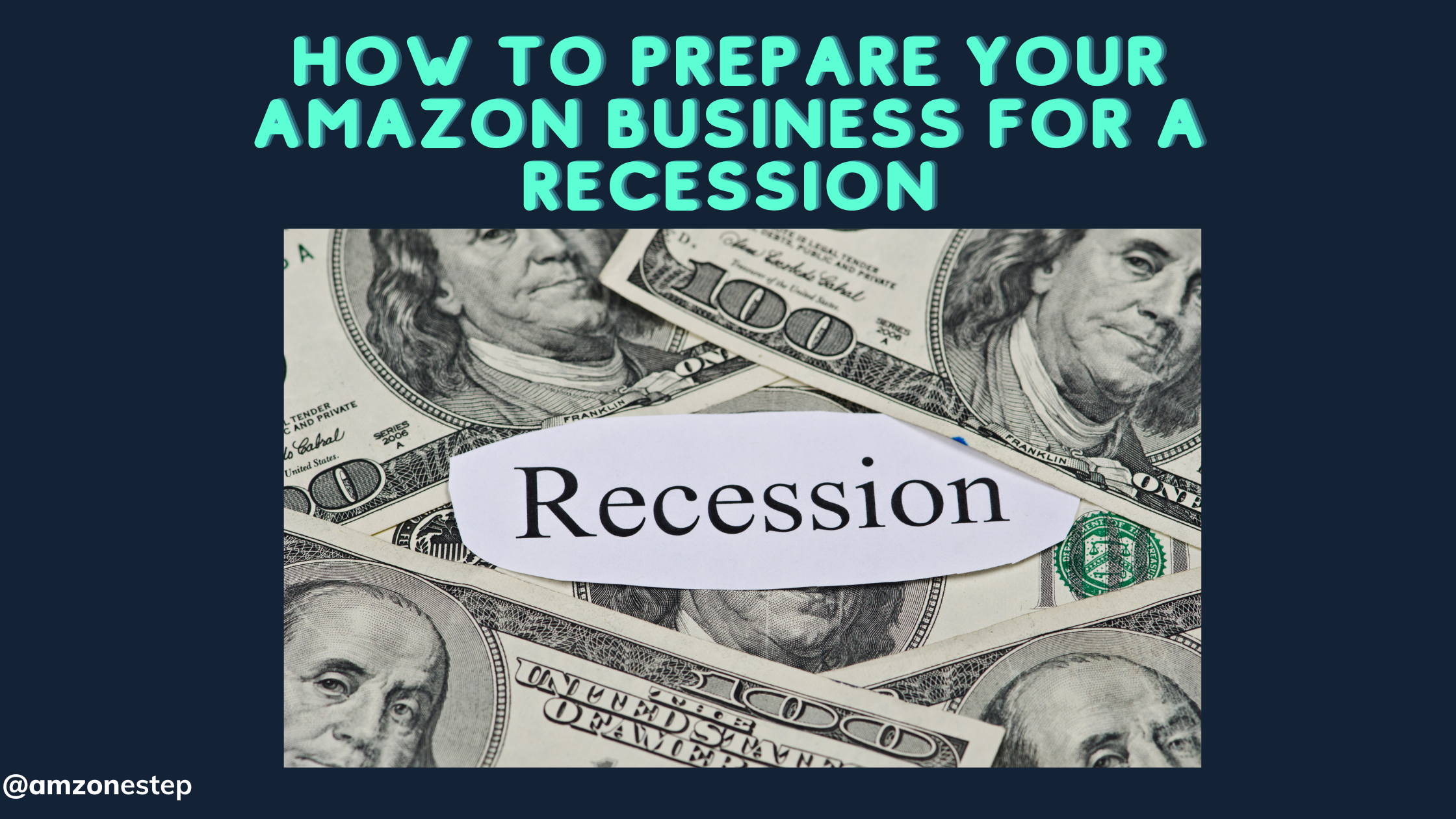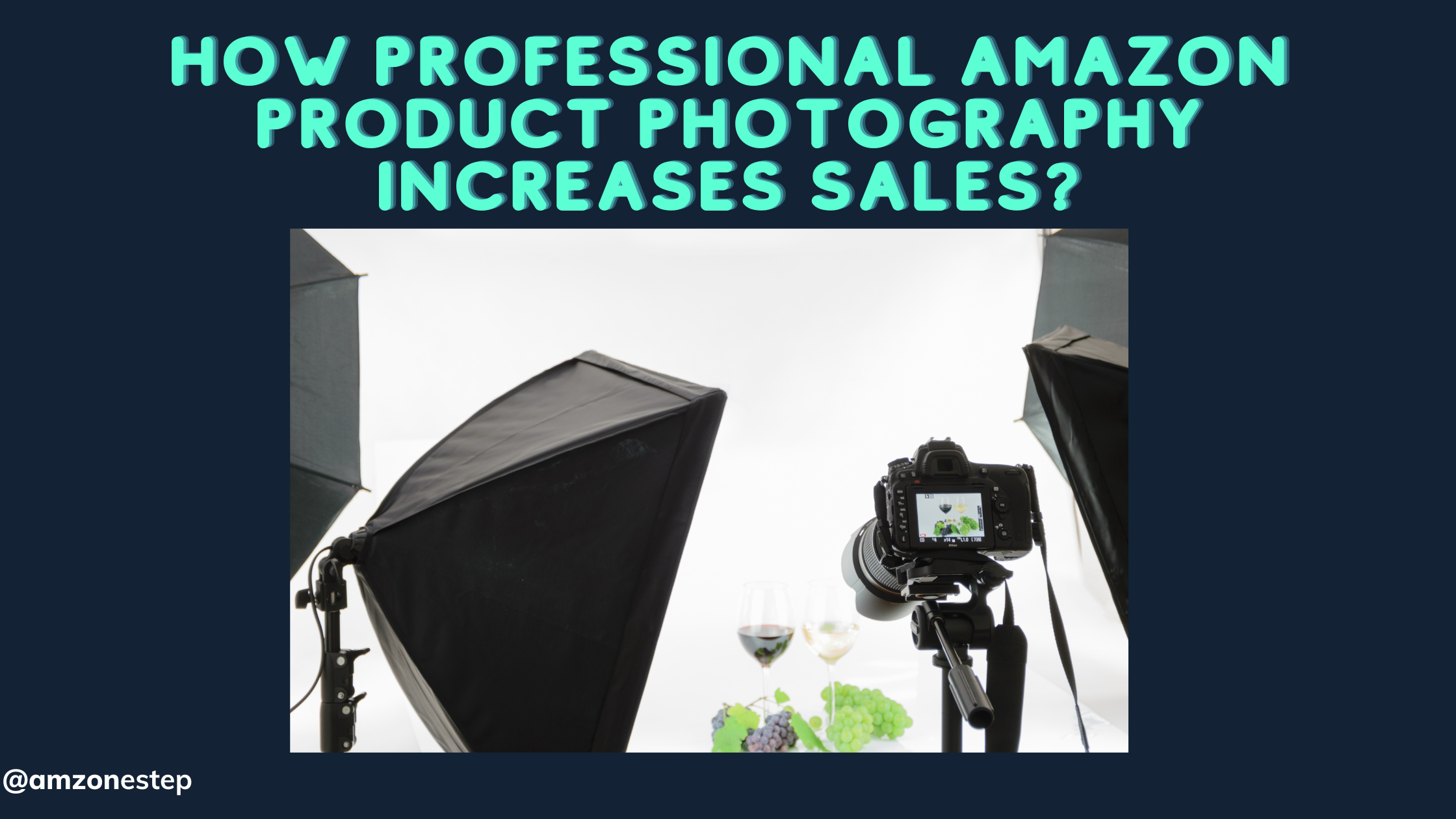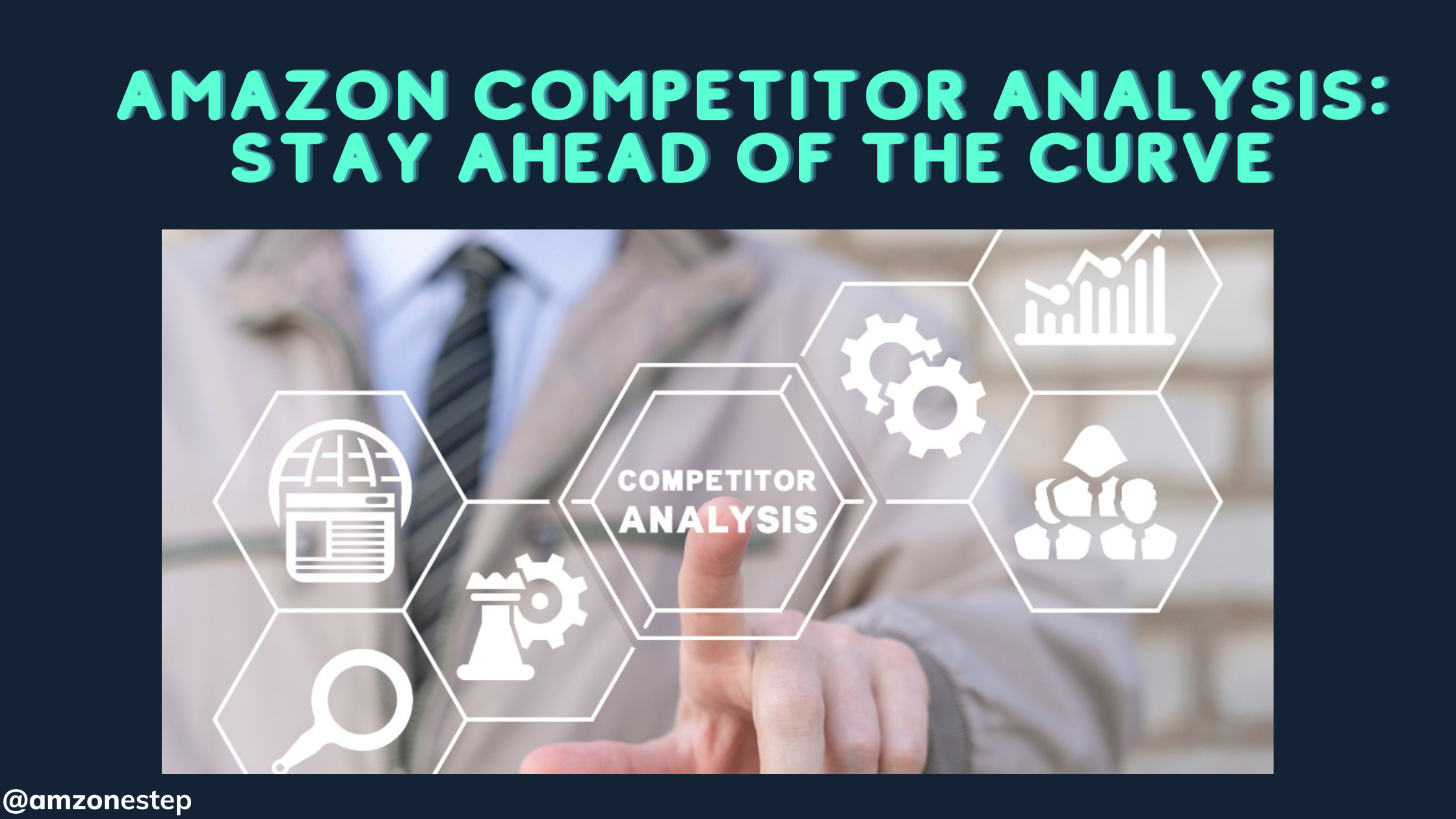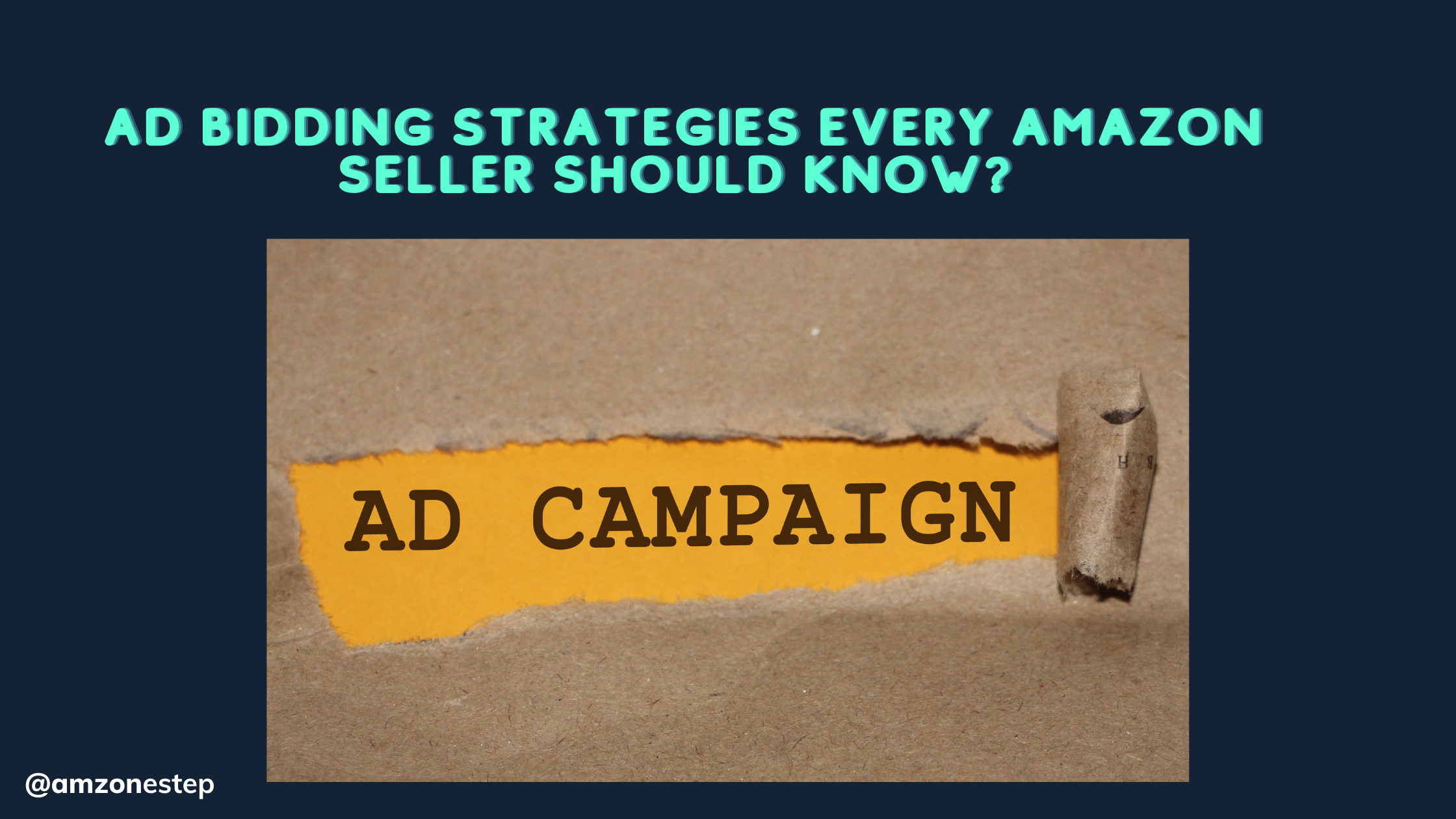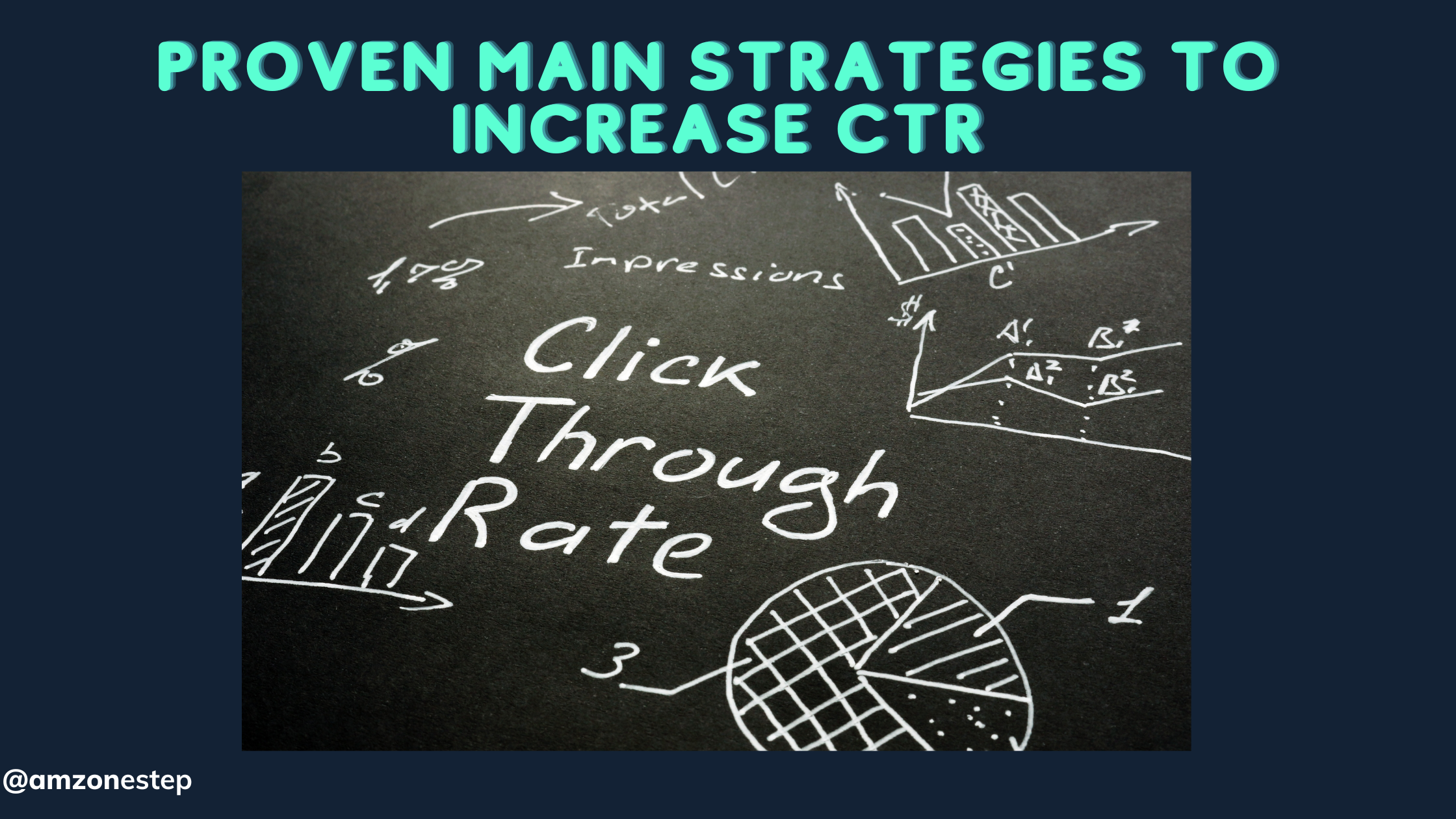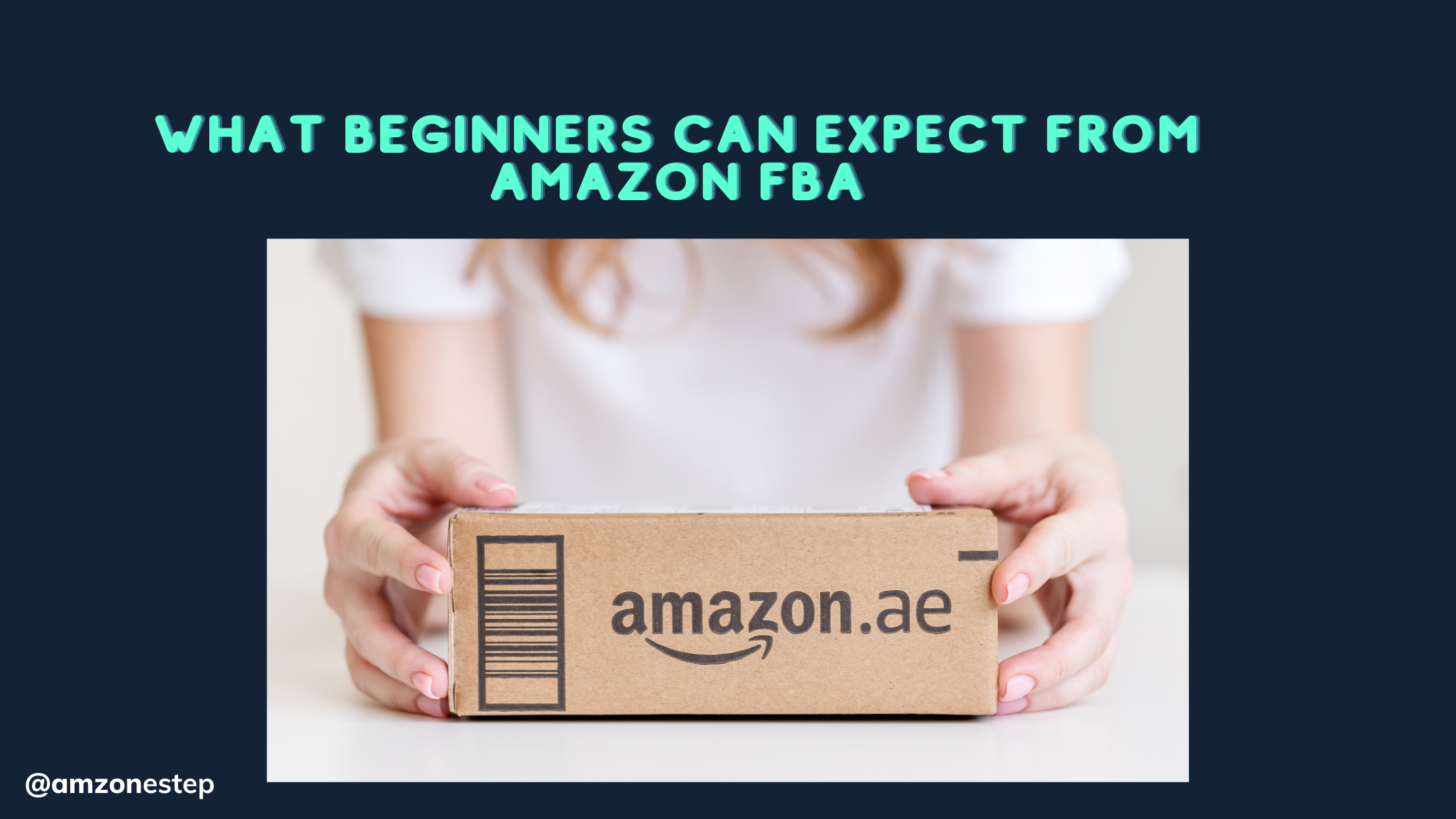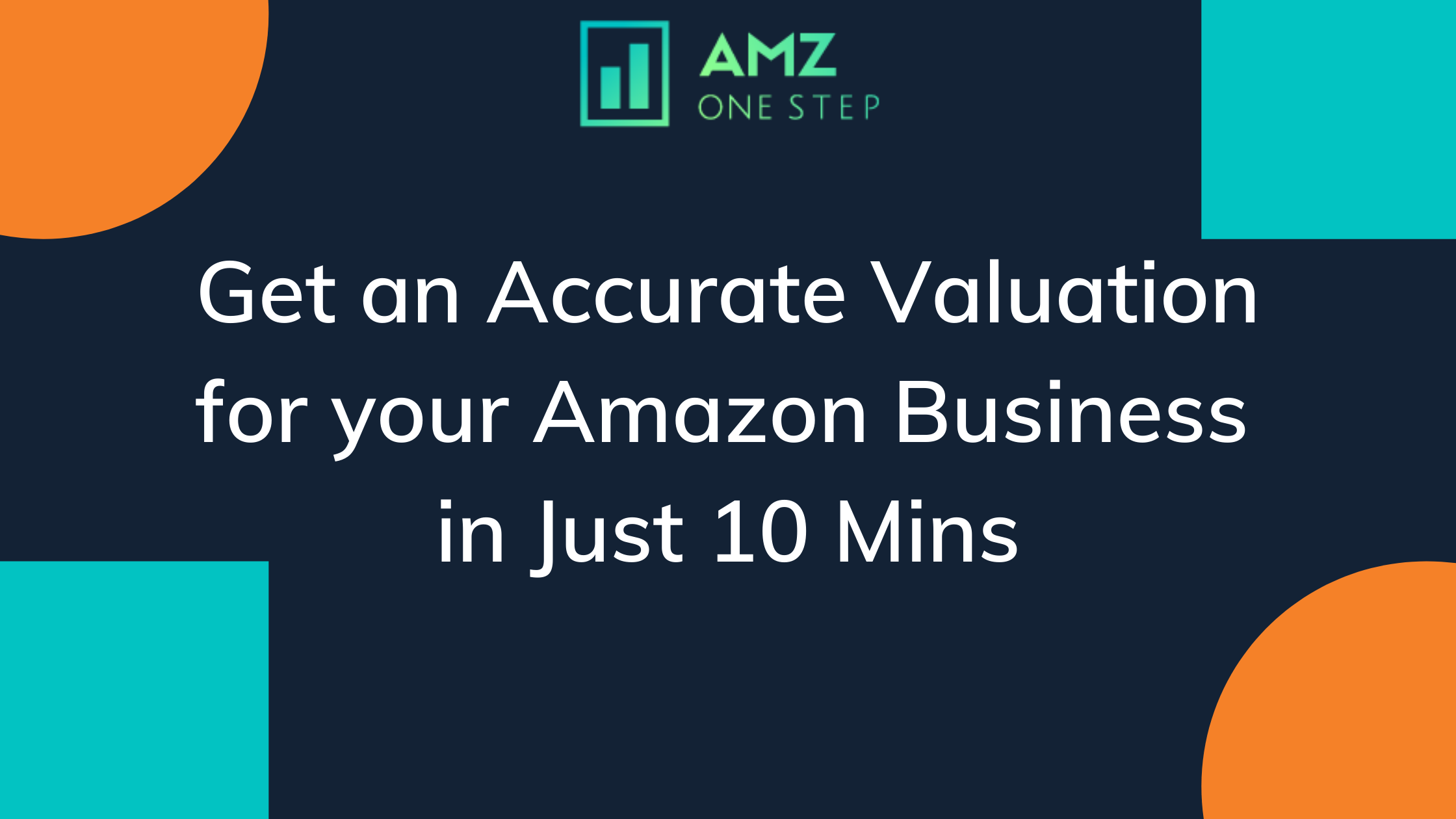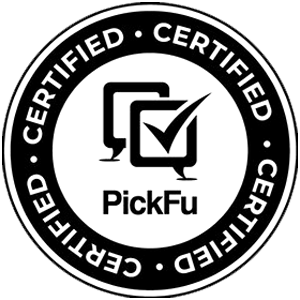Creating high-performing ad creatives that grab attention, engage your target audience, and eventually convert them into customers is crucial for the success of your advertising campaigns. It’s critical to develop ad creatives that stand out and provide results in the competitive environment of Amazon selling.
This post examines practical methods for creating ad creatives to maximize your Amazon advertising success.
Crafting Compelling Headlines and Ad Copy
Writing attractive headlines and ad language is essential for grabbing attention and promoting the best conversion rate on Amazon. Here is a step-by-step tutorial on how to write catchy headlines and ad copy:
1. Identify Unique Selling Points
Find out what makes your product stand out from the competition. What differentiates it from its rivals? Which comes first, the advantages or the features? To attract attention and stand out in a crowded marketplace, emphasize these distinctive features in your headlines and ad language.
2. Use Eye-Catching terms
To make an impact with your headlines, use eye-catching and strong terms. Words like “discover,” “unleash,” “transform,” “exclusive,” or “limited time” might spark interest and persuade visitors to click on your advertisement.
3. Create a Sense of Urgency
Make your ad copy feel hurried to compel quick action. Draw attention to one-time specials, unique discounts, or special promotions. Words like “limited stock available,” “buy now and save,” or “offer ends soon” can evoke a feeling of urgency and boost conversions.
Creating Persuasive Ad Copy that Engages and Converts


Well-crafted ad copy that engages and converts leads to a higher ROI. When your ad copy effectively captures attention, generates interest, and drives conversions, you can see a significant return on your advertising investment.
The ultimate goal of persuasive ad copy is to convert potential customers into buyers. By effectively communicating the value and benefits of your product, you can inspire confidence and convince shoppers that your product is the right choice. This can result in higher conversion rates and increased sales.
1. Utilizing Effective Call-to-Actions (CTAs)
Effective call-to-actions (CTAs) are essential for maximizing FBA sales in Amazon’s competitive marketplace when used in product listings and advertising campaigns. A well-designed CTA encourages potential consumers to take action while inspiring a sense of urgency and scarcity that enables them to purchase.
2. Limited-Time Offers
Use time-limited offers in your CTAs to instill a feeling of urgency. Using language like “Limited Time Offer,” “Act Now,” or “Offer Ends Soon” highlights the necessity for the quick action and encourages potential buyers to buy before the chance passes.
3. Countdown Timers
Display countdown clocks on your product listings or adverts to graphically demonstrate the limited-time nature of a bargain or offer. Customers are reminded that time is running out and they need to act quickly via countdown timers, which elicit a sense of urgency.
4. Limited Stock Availability
In order to convey a sense of scarcity, highlight the limited product availability in your CTAs. “Limited Stock Remaining,” “Only X Left in Stock,” or “Hurry, While Supplies Last” are examples of phrases that suggest the product is in great demand and will soon run out of stock.
5. Exclusive Offers
Offer exclusive deals or promotions to specific customer segments or loyalty program members. By positioning these offers as exclusive and limited, you can make potential customers feel privileged and incentivize them to take advantage of the unique opportunity.
6. Optimizing Ad Formats and Placement
Optimizing ad types and placement is essential when conducting advertising campaigns on Amazon in order to maximize visibility and accomplish campaign objectives. You may successfully reach your target audience and encourage conversions by choosing the appropriate ad style and positioning your advertising in strategic locations. To improve your advertising success, we will look at techniques for optimizing Amazon listings, ad types and placement in this post.
Selecting the Right Ad Format for Your Campaign
1. Sponsored Product Ads
Use this format to advertise particular items and target pertinent keywords to attract buyers looking for comparable products. These advertisements can be found on product detail pages and search results pages on Amazon.com. For specific items, they are successful at increasing exposure and conversions.
2. Sponsored Brand Ads
Use Sponsored Brand Ads to enhance brand recognition, promote a range of products, and drive traffic to your brand’s Store or product detail pages. Sponsored Brand Ads showcase your brand logo, multiple products, and a customized headline. They appear at the top of search results, offering broad exposure and increased brand visibility.
3. Sponsored Display Ads
Use Sponsored Display Ads for retargeting customers who have viewed your products, target competitor products, or reach a wider audience through Amazon’s display network. Sponsored Display Ads help you reach audiences both on and off Amazon. These ads can be placed on product detail pages, customer reviews, and external websites.
Maximizing Ad Visibility with Strategic Placement
1. Keyword Targeting
Pick relevant keywords that support the objectives of your campaign and product. Using targeted keywords makes buyers more likely to see your adverts when they use such phrases. Increase the likelihood that buyers actively browsing for items similar to yours will see your ads by using Amazon’s keyword-targeting capabilities.
2. Product Targeting
With product targeting, you may choose particular goods or groups pertinent to your campaign. Customers already interested in your niche’s items might be attracted to your business using this tactic. You may contact clients exploring or buying comparable products by focusing on related products.
3. Bid Optimization
Optimize your bids to improve your chances of having your adverts appear in prominent locations. By placing higher bids, you may get ideal ad locations that will increase click-through rates and exposure. To make sure you’re getting the most out of your advertising budget, keep an eye on your bids frequently and modify them depending on performance statistics.
4. Placement Customization
Amazon provides options for customizing ad placements within search results or on specific product detail pages. Your ads can appear at the top or bottom of search results or even on specific ASIN (Amazon Standard Identification Number) detail pages. Experiment with different placement options to determine which yields the best results for your campaign objectives.
5. A/B Testing and Optimizing Ad Creatives
By conducting A/B tests, analyzing relevant metrics, and iterating on your ad creatives, you can continuously improve your advertising campaigns and increase conversions.
6. Gathering Actionable Insights
A/B testing offers insightful data on customer preferences, actions, and levels of engagement. You may better understand what appeals to your target audience by methodically testing different aspects of your ad creatives.
You can then use this knowledge to optimize your advertising approach by making data-driven decisions.
7. Refining Your Messaging
By contrasting various strategies, A/B testing enables you to improve your ad messaging. To determine which kind of communication will be most effective with your audience, try several value propositions, messaging tenors, and even visual styles. By doing this, you can create more engaging and powerful ads.
Analyzing Metrics and Iterating for Better Results
1. Key Metrics to Analyse
These measurements reveal the efficiency of your ad creatives and point out areas that need development.
2. Iterative Optimization
Improve your ad creatives based on the outcomes of your A/B testing and the examination of pertinent metrics. Implement adjustments and upgrades to the victorious variant while maintaining the baseline control variant. Test new versions frequently to improve your ads’ performance over time.
3. Continuous Monitoring and Experimentation
Track pertinent data, keep track of your ad’s success, and be open to continued testing. Your ad creatives must be optimized and adjusted by shifting consumer tastes, market dynamics, and competitive pressures. To remain ahead of the competition and sustain a high-performing ad campaign, frequently try fresh concepts and variants.
Learning from Successful Amazon Ad Case Studies
Advertisers may know what works and best practices by studying successful ad campaigns. Practical advertising ideas and approaches may be learned from studying successful Amazon ad case studies.
This post will discuss the value of studying successful Amazon ad case studies, how to analyze high-performing campaigns, and how to derive practical lessons for your own advertising projects.
Analyzing High-Performing Ad Campaigns
Examine how the campaign used audience targeting and segmentation. Find out more about the target audience’s characteristics, interests, and behavior and how those things affected the ad campaign’s success.
How AI Helps Amazon For Crafting High-Performing Ad Creatives

Amazon can create effective ad creatives with the aid of AI to a large extent. In this procedure, AI can help in the following ways:
1. Dynamic Ad Generation
Dynamic ad creatives may be produced using AI that instantly updates based on real-time data like price, inventory levels, or customer behavior. This enables marketers to provide pertinent and current information to potential consumers, optimizing the user experience and ad performance.
2. Voice and Chatbot Integration
AI may help create ad creatives optimized for voice search and conversational engagements as voice assistants and chatbots grow more common. In order to ensure that ad creatives are suited to the particular demands and context of voice-driven interactions, AI-powered natural language processing (NLP) models may help interpret user queries and intents.
3. Image and Video Optimization
AI tools like computer vision and deep learning can analyze photographs and videos automatically to find objects, scenes, and feelings. This analysis makes the automated picture and video optimization possible by recommending adjustments or improvements to make the visuals more attractive and interesting. AI can also create alternative Amazon images that are more likely to appeal to certain client categories.
4. Copywriting Assistance
AI-powered natural language generation (NLG) models may provide ad headlines, descriptions, and call-to-actions to help with copywriting. These models may enhance the effectiveness and originality of the ad copywriting process by offering other recommendations, linguistic changes, and even help with translations into other languages.
In conclusion, AI can aid Amazon and advertisers in creating effective ad creatives by utilizing data analysis, personalization, image/video optimization, copywriting support, A/B testing, dynamic ad production, and voice/chatbot integration. The efficacy, efficiency, and relevancy of marketers’ ad PPC campaigns may be improved by utilizing AI, eventually leading to better outcomes on the Amazon platform.
READ MORE: Creating Impactful Amazon Ads with AI-Generated Visuals
Examples Of Infographics And CTA For Amazon Strategies
Infographics are potent visual tools that effectively convey information, captivate audiences, and increase conversions on Amazon. Infographics may enhance your marketing approach when used in conjunction with appealing call-to-actions (CTAs).
This post will discuss several infographic styles and give instances of how they may be utilized in combination with CTAs for Amazon’s strategy.
1. Comparison Infographic
A comparison infographic highlights the features, benefits, and differences between two or more products. It allows potential customers to make informed decisions by visually presenting information side by side. An example CTA: “Compare Now and Choose the Best Option for You!”
2. How-to Guide Infographic
An infographic on how to use a product offers detailed instructions or advice. Complex procedures are made simpler, and clients are given advice on how to get the most out of the product. CTA illustration: “Learn How to Get Started Today!”
3. Data-driven Infographic
A data-driven infographic visually represents statistical information, market trends, or study findings. It establishes credibility and establishes your brand as a leader in the field. Take this CTA as an example: “Discover the Latest Market Insights!”
4. Product Features Infographic
It highlights the salient features and graphically illustrates how the product differs from its rivals. Example of a CTA: “Discover the Outstanding Features Now!”
5. Benefits Infographic
A benefits infographic highlights the advantages and positive results of utilizing a product. It demonstrates how the product addresses certain issues or meets client wants. CTA illustration: “Start Taking Advantage Today!”
Best Practices for CTAs in Infographics

How to Make CTAs Pop: Make sure your CTAs are easily visible in the infographic. Use contrasting colors, bolder fonts, or buttons to grab attention and urge readers to take action.
1. Use action verbs
Incorporate verbs that call for quick action into your CTAs to compel visitors to take action. These are just a few examples: “Discover,” “Shop,” “Learn,” or “Get Started.”
2. Keep CTAs Short and simple
Create CTAs that are short and straightforward and that clearly communicate the intended action. Keep your wording simple and free of ambiguity to avoid confusing potential buyers.
3. Create an Air of Urgency
Add a sense of urgency to your CTAs by utilizing words like “Limited Time Offer,” “Act Now,” or “Don’t Miss Out.” This nudges visitors to act quickly before the window of opportunity closes.
4. Link CTAs to Landing Pages
Ensure that your CTAs lead to relevant landing pages where viewers can seamlessly take the desired action, such as purchasing or signing up for a newsletter.
Conclusion
Your Amazon advertising efforts may become even more effective by using case studies of previous ads and AI technology. You may improve your ad creatives, hone your targeting, and obtain greater results by studying high-performing ad campaigns, gleaning insightful knowledge, and implementing best practices

Hi there! I’m the content marketing and branding specialist for AMZ One Step. I work hard to create engaging and informative content that helps our readers learn more about Amazon selling and how to make the most of their businesses. I love spending time with my family and exploring literary works when I’m not writing or working on projects.

